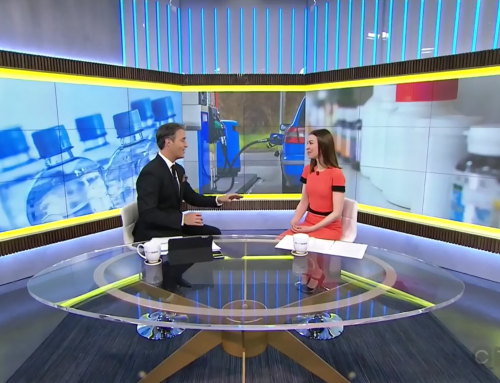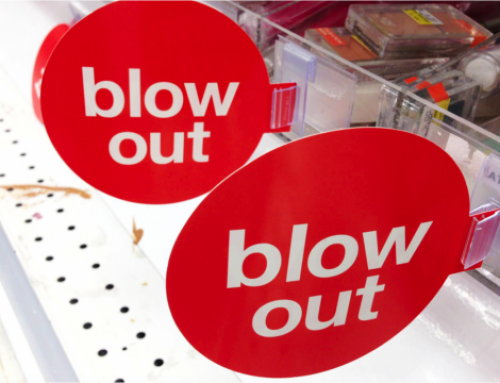I’m gassed by the high price of fuel these days. When rolling into the gouging gas station I can’t help but feel fumed by the price at the pump. Just lifting the gas nozzle into my car’s fuel tank exhausts my wallet.
Since I don’t think cheap gas can be had anytime soon, I’ve decided to fill up on a few tactics to help counter the price at the pump. There are many simple ways to save money on gas by improving gas mileage that don’t require you to shell out for a hybrid or more fuel efficient car (although ideal for the environment).
In my quest to burn less fossil fuel I’ve also discovered some minor lifestyle adjustments you can make to help cut down on gasoline expenses.
Here’s how to counter high gas prices, improve gas mileage, and save money on gas:
1. Track Your Gas.
There’s no sense in complaining about high gas prices or looking to improve gas mileage if you don’t know how much gas you use. Besides, it’s impossible to tell if your attempts to save on gas are actually successful without tracking and measuring your fuel consumption and gas mileage. I have two methods for tracking gas mileage, the Pen and Paper Method and the ScanGauge Method.
Tracking Gas Mileage: Pen and Paper Method
I like simple. Tracking fuel efficiency is pretty simple with just a notebook and a pen.
- Fuel up. Each time you fill your tank write down the distance you drove on this tank, the amount of fuel purchased, and the price per litre or gallon.
- Clear trip odometer. Reset your car’s trip odometer to start measuring the distance before the next fueling.
- Calculate. When you get home calculate the fuel efficiently for that tank. The miles per gallon (MPG) is the total miles for the tank divided by the gallons of gas used. I created a Gas Mileage Calculator to help you with the mathy math.
- Record. Write and record these values in a notebook or logbook. My “better half” keeps this logbook in his car to better help keep track. You will soon see if your attempts to improve mileage are paying off.
Tracking Gas Mileage: ScanGauge Method
My “better half” is a bit of a gadget guy and went and got a gas mileage measuring device called a ScanGauge II. At first I was skeptical with this computer thinger. But since seeing it in action I’m kind of amazed by the very detailed information to be gleaned by gadgets like these. Basically, my “better half” hooked this computer into his Subaru (without any tools) and now measures fuel consumption, cost-per-mile (or kilometer), and much more in real time. It’s kinda cool.
If you are looking to save money, then the Pen and Paper gas mileage tracking method works just fine.
2. Drive Less.
The most fuel efficient vehicle is the one that is not running. A Hummer parked in the driveway consumes less fuel than a Prius driving on the road. It’s simple math. By staying home Saturday nights, walking to the gym instead of driving, reading a book over driving to the video store, and commuting to work or school on a bike you can save a lot of moolah on gas. You’ll probably save money on doing more frugal activities at home as well.
3. Take the Bus. Ride a Bike. Take a Hike.
I hate to call taking the bus, riding a bike, and walking alternate forms of transportation. Many cities and organizations refer to bus riders and bike peddlers as alternate transportation types. But to me, these forms of transportation are essential methods to keeping my wallet fat and my butt lean.
- Take the bus. Compared to driving a car, the amount of fuel used per person on a light-rail train or on a bus is astoundingly small. Commuting to work using public transit will save you a significant amount of fuel and wear-and-tear on your vehicle. It may not be super glamorous, but it is affordable. Plus, you can arrive at work somewhat relaxed, not having battled through morning traffic.
- Ride a bike. For shorter distances, consider riding a bike. Biking is very fuel efficient as bicycles require no gasoline to function. Plus, you’ll get to fuel up on more calories burned!
- Take a hike. If your final destination is close-by, then get on your walking shoes and hoof it! You’ll not only save on gas but you’ll save on parking costs as well.
I’ve been a wealthy and wise bike commuter for over 10 years now. I have a size 26 waist and buns of steel. Sure, getting into walking or biking mode takes a little planning, but the benefits of getting physically fit and saving big bucks are huge. Unfortunately, many cities in North America have done very little to support good public transit or have built little infrastructure to be bike-friendly. As the price of fuel continues to climb, my hope is this will change for the better.
4. Combine Trips.
Stop diving millions of miles doing millions of errands everyday. All this extra mileage adds up! Rather than spin your wheels and consume lots of gas, try taking a few minutes in the morning and plan your daily activities. Here’s how:
- Start by listing all your fixed appointments.
- Schedule all other non-fixed activities around your fixed appointments.
- Get your car in gear and get everything done on one single trip.
You may just find you’ll end up saving both gas and time!
Tip: Plan your trip so the longest drive is done first. This tactic lets your car warm up properly and can increase overall fuel efficiency, more-so than making several cold starts.
5. Carpool.
Ready for some simple and frugal math? One vehicle traveling with four people consumes about one quarter of the gas as four vehicles seating one person each. Carpooling is an awesome method for increasing the number of butts sitting in your car while decreasing both the number of vehicles on the road and the gasoline consumed.
Even if you carpool once weekly with just one other person, you will still save ten percent of your commuting gas costs! Many larger towns also have carpool or “high occupancy vehicle” lanes which makes your commute both faster and cheaper. To arrange a carpooling group:
- Colleague connection. Talk to the people you work with and see who lives near you.
- Neighborhood watch. Talk to your neighbors and discover who drives near your destinations.
- Connect with carpooling services. Most bigger towns and cities have carpooling hot lines and websites looking to connect cars with people.
6. Slow Down. You move too Fast.
All cars have a “sweet spot” at which they perform at optimal fuel efficiently. While this “sweet spot” will vary from vehicle to vehicle, I can guarantee it’s not at 90MPH! Whether you do most of your driving on a highway or in the city, the money to be saved on gas from slowing down is considerable.
- Highway drivers. When cruising on the highway, your car burns lots of fuel just punching a hole in the air. While breaking wind may sound like fun, it’s actually very expensive. The faster you drive, the harder your car has to work to just to move forward against wind resistance. Since your car’s work increases exponentially with the speed, slowing down just a bit can save a significant amount of gas and do wonders for fuel efficiency.
- City drivers. When driving in the city, most of the gas consumed is through acceleration. The constant speeding up and slowing down during city jaunts is the reason why city cars have inferior gas mileage to highway cruisers. To save in town, accelerate gently from a stop leaving lots of space between your car and the one in front of you.
Besides, slowing down is just safer for everyone on the road.
7. Maintain Your Vehicle.
Clogged air filters, sludgy oil, and under inflated tires are all things that will guzzle up your gas. A properly maintained vehicle can save you big bucks on gas, keep you safe, and increase the life of your ride. Some quick tips on better car maintenance:
- RTFM. Read your car’s freaking manual to schedule what maintenance needs to be done and how often.
- Get filtered. Change the air filter as scheduled, even if it looks clean. Tiny dust particles can easily reduce the air your engine needs to breathe, increasing the amount of gas it burns. It’s easy to change the air filter yourself. This involves opening a few metal snaps on your car’s engine. The car user manual should have detailed instructions.
- Get oiled. You will drive further on less fuel when your car is well lubed. The car user manual should say how often oil changes are required. Modern engines and oils can go longer distances with less changes. Just don’t neglect to change it!
- Under pressure. Check the pressure in your tires each time you get gas. Inflate your tires to at least the recommended pressure stated in your car’s manual. To increase fuel efficiency, try inflating to the higher pressure listed in the user manual. Just don’t go higher than the maximum pressure printed on the tire! Higher tire pressures will help save a bit of gas, but may result in a harsher ride on rough roads.
8. Idle Threats.
An idling car is an expensive gas guzzling vehicle. A car parked with the engine running can use anywhere from 1/4 gallon (1L) to 3/4 gallon (3L) every hour while doing absolutely no work. To help ease any idle threats to your pocketbook, here are some idling tips:
- Morning warming. When starting out in the morning, don’t let your car sit and idle to warm up. Start the car, wait a few seconds, and gently drive off. Modern cars warm up much faster and more efficiently when being driven than they do when sitting and idling.
- Stop sitting. If you’re going to be stopped for more than 30 seconds, perhaps turn the car off. If you’re idling to pick someone up or waiting to drop someone off, consider turning your car off.
Many cities in Europe have installed countdown timers at longer lights to allow people to turn off their cars instead of sitting and idling.
9. Lighten Your Load.
Harness the power of aerodynamics and lighten your load to improve fuel effiency and save. With these few simple tricks, you can get zoomy like a race car while consuming less gas.
- Lose the rack. If you have a roof rack on your car, remove it. Unless you are hauling cargo, roof racks add extra weight and increase drag on your fuel efficiency. Only mount a roof rack when it’s needed and you can save a lot on gas money.
- Got junk in your trunk? Are you packing lots of extra pounds in the trunk of your car? Remove it. Every extra bit of unnecessary weight burns extra fuel each time you drive up a hill or increase speeds. Return overdue library books, toss out the trash behind the seat, and remove the sandbags and chains from last winter. Not only will you save gas, you’ll also feel happier driving in a clean vehicle! Just keep the spare tire, just in case.
10. Telecommute.
Not everyone has a job or an employer who allows logging in from home, but if you can, try telecommuting. Working from home as little as once per week can save you 20 percent of your commuting gas. Telecommuting does require some discipline. The distractions found at home are different (and often greater) than those in the workplace.
Are you fuming over the prices at the pump? Got any suggestions for saving some bucks on gas? Got any fuel efficiency tips? What’s your gas?





Living out in the sticks has helped me. I have to need something reeeeeally bad before I’m willing to trek in to the city. Being lazy also helps…
I am a sucker for cute lil online trackers so I recently started using (free) Fuel Frog. I just enter in the info off my receipt (+ the odometer reading) and it does the math for me and gives me a cute little graph. It is also interesting to look back on the gas price increases since a year ago.
http://www.fuelfrog.com/
I’m now telecommuting 100% of the time (well, except tuesdays when I go in with another guy working from home). But it helps that I’m a contract computer software geek person. 🙂
Nice thorough list!
Some things I can’t change – like I’m a one person workplace with no bus going there – rural – but luckily only 5 miles round trip and I work 4 8’s…
And I can walk to grocery, library, bank, and PO etc.
However, I do see room for major improvement on #9…Clean out the Car! Since I’ve been remodeling the house, everything there’s no spot for yet seems to have ended up in the car 🙂 (no garage yet) So, while it’s still cool this morning, and it’s my day off – Monday – I’ll just get out there and clean out the car… thanks for the reminder!
I think DC has “slugging”, where people wait for drivers going their way on a designated corner. The drivers get to use the carpool lanes, the people get to save money on fuel.
Also: CAR SHARES! I really wanted to join one when I lived in Philadelphia. They’re awesome-stupendous-wicked-cool if you live in a big city, and I know there’s at least one company (FlexCar) expanding into suburban locales.
And I think it’d amuse you to know: the Mythbusters busted/confirmed/both the myth that rolling your windows down helps save fuel from AC. Turns out that only works if you’re going less than 50 mph, because at that point turbulence starts becoming a drag (literally) with the windows dwon.
Guess what? Costco is opening gas stations and charging about 7 cents less at the pumps. How’s that for fuel savings?
Nothing new here that hasn’t been hashed out in every article about the subject.
Good point about getting rid of stuff in the trunk. That can really add a lot of weight. I’m excited for the Tesla to come out. That will have great mileage.
Many of these suggestions simply say “Don’t drive” in a variety of clever ways…That doesn’t work for people in rural areas who MUST drive to work because there is no city bus.
Can anyone tell me, does shifting into “Neutral” (while idling in a drive-thru or coasting down a hill) actually save gas? I’ve heard this but didn’t know if it was a myth.
yes the whole neutral thing is true…not a myth, at least while driving.
as you accelerate, the engine continually needs more fuel to keep the car propelling forward. while in neutral, fuel is not be pumped into the engine, hence saving fuel.
however, if, for example, you roll down a hill in neutral to the point that you are going to have to accelerate at a very rapid rate to get back up to speed will defeat the purpose. i tend to do this while on a hills on the highway, when you are approaching the crest of the hill…gently accelerate.
Re: Costco gas. I don’t buy it because the line-ups are so long. I figure I would be spending my savings in idling. Also it wastes a lot of my time and makes me irritable, plus sniffing in all that gas while waiting.
Instead, I get my gas at Loblaws affiliates whenever possible, as there is a rebate which can be used at NoFrills etc. I also listen to the news of gas prices being about to rise or fall, and buy my gas when the prices are a bit better. If I am not close to a Loblaws gas bar etc, I go to Shell where I can get AirMiles. If doing AirMiles, try to arrange it so that you get the most AirMiles for your purchase, usually a minimum of $30; next best level is usually $50; you will not get any value back for amounts over the threshholds, so don’t spend it. I don’t like Esso/Aeroplan because it is unlikely I will ever be able to use the aeroplan points – they expire now, and if you are not travelling a lot or using the expensive credit card that goes with it, you are not likely to ever get enough points to redeem before they expire. I redeem the AirMiles for ViaRail GCs, where I don’t have to buy any gas, or drive! At the moment, ViaRail and Rexall/Phamaplus have the best rates of redemption for things I would actually use.
The ultimate solution to save on gas is to not buy any…ever. I now drive a 100% electric car (since October 2011). Zero gas, zero emissions, zero oil changes, low maintenance. About 1200km of driving per month for only $30 of hydro (including all taxes). No gas car will ever be as efficient. My car can seat 5 (or 4 adults).